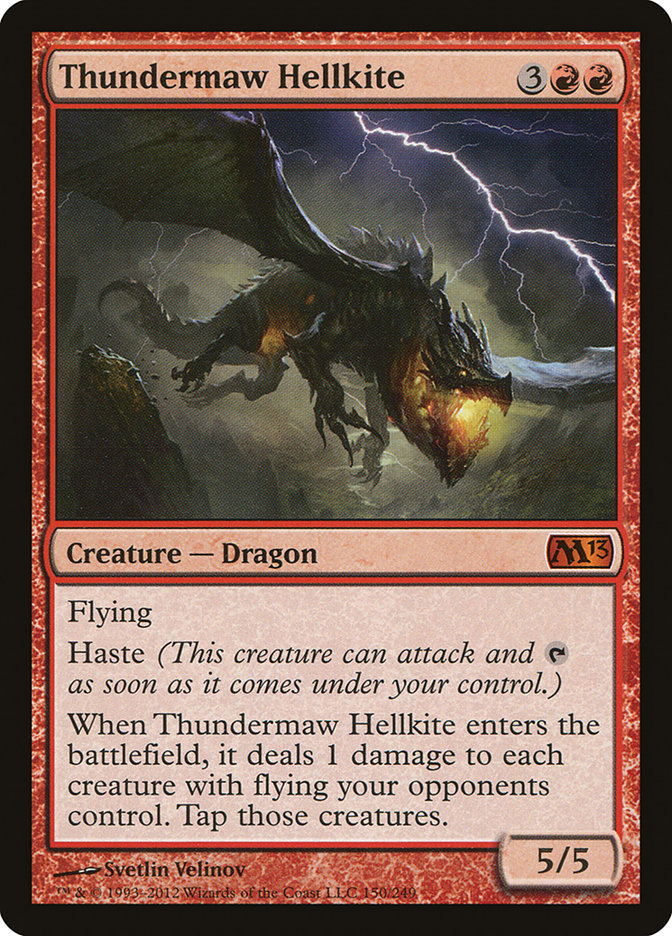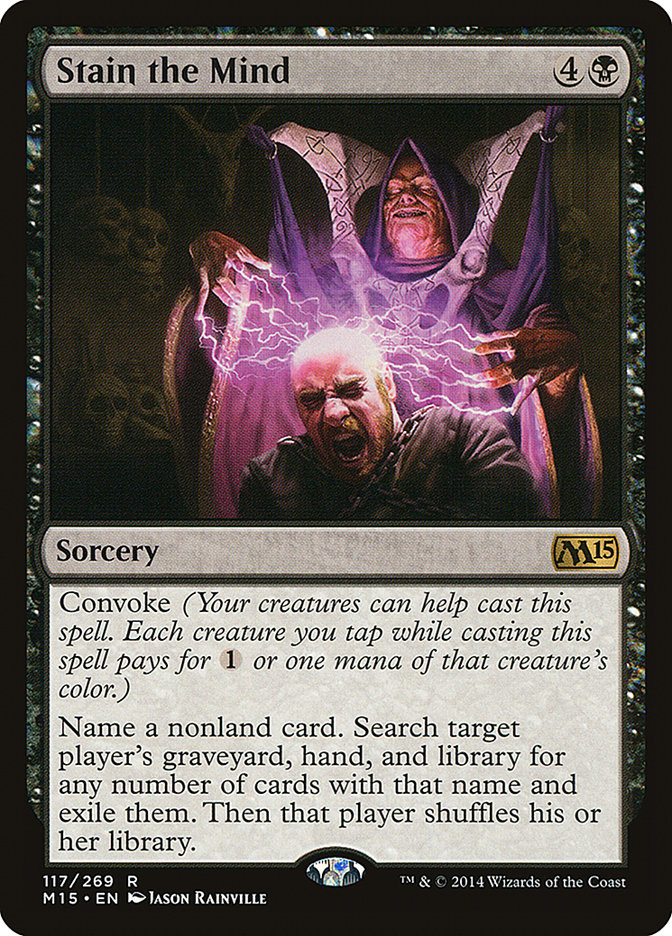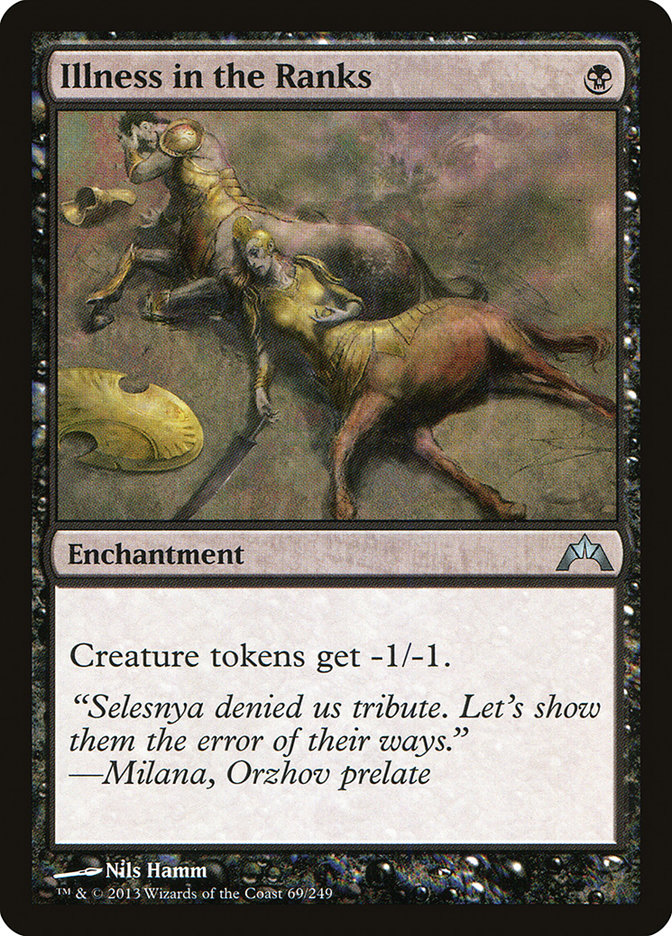It’s that time of year again. It’s the week after the Pro Tour, and there is knowledge out there to be gleaned. It wasn’t going to happen, but by popular
acclaim, we had a Modern Pro Tour, so now let’s look at what it means.
Fate Reforged was the new set for the most recent Pro Tour in Washington, D.C., and while it didn’t shake up the universe the way I think it may have in
Standard, it is still obvious to say that this is a wildly different Modern. If you’ve been hiding in a cave and don’t know why, it’s because of the recent
bannings that have essentially made this Modern an entirely new format. Where before the world was ruled by Treasure Cruise, Dig Through Time, and Birthing
Pod, now we would see how things changed. To give one indication, Chalice of the Void, the darling of GP Omaha, only had 17 copies among the Top 116 decks.
So, what was going to be played in Modern? What’s good?
Top of the Modern to You
Going into this Pro Tour, the most obvious two decks worthy of consideration were almost certainly Abzan and Burn. Beyond that, there were, of course, an
incredible number of potential archetypes that were going to be good, but the question was, how good?
When the history books are written, people will say that this was the Top 8:
1st: Antonio Del Moral Leon, Splinter Twin
2nd: Justin Cohen, Amulet Bloom
3rd: Jelger Wiegersma, Splinter Twin
4th: Jesse Hampton, Abzan Midrange
5th: Eric Froehlich, Abzan Midrange
6th: Seth Manfield, Burn
7th: Jacob Wilson, Abzan Midrange
8th: Lee Shi Tian, Burn
Four archetypes in the Top 8 is not too shabby. Of course, this does not at all tell the whole story. Our champion, Antonio Del Moral Leon, certainly
earned his Pro Tour trophy, but for those of us who are interested in Modern specifically, what this doesn’t take into account are the rounds of
Draft where Antonio went 5-1 that helped him make that Top 8. His Modern finish was 7-1-2, and while he may have done better than that, had he not had the
luxury of drawing into Top 8, we can’t really know.
Once you do a mixed event, any attempt to extricate the pure data is going to have flaws. The best we can do is attempt to isolate for Constructed,
treating the pollution of the data as a necessary evil. In a single format event, the “cream rises to the top.” Mixed format events are much better at
sorting out who is a better overall player, but if you love Constructed as much as I do, you want to know which tools in the toolbox are the best.
I made due and did the best I could to determine that. In order to unravel this beast, I examined every player in contention for the Top 8 of the Modern
portion (all 19 players with a 8-2 record or better in Modern) – unlike the clean break at Pro Tour M15, this would
mean a great deal more digging. From there, I went through and looked at every opponent that those players played in each round of Modern and how well that
opponent did in Modern.
Wizards of the Coast uses a minimum Opponent Match Win of 33%. In the 30 points of ten rounds of Modern, that would be 10 match points to award at a
minimum level for someone having played against any opponent. However, I’ve always felt that this wasn’t generous enough. While Wizards doesn’t do it this
way, in order to reduce the penalty for having played a player who did less successfully, I moved this up to a minimum of 50% – or 15 points. This
flattened the results out quite a bit, but the line was still clear.
Our famous eighth place competitor, for example, finished with 175 awarded match points opposing him. The two other people above him at 8-2 were all fairly
close in match points; the closest of the eleven below him was clearly several match wins behind.
Based on their Modern record (with a tiebreak based on opponent’s strength in Modern), only three people from the actual top eight are in the “Modern Only”
Top 8; here they are:
8th Place:
Creatures (14)
Lands (19)
Spells (27)
- 1 Sleight of Hand
- 4 Might of Old Krosa
- 4 Vines of Vastwood
- 2 Distortion Strike
- 4 Mutagenic Growth
- 2 Apostle's Blessing
- 4 Gitaxian Probe
- 2 Wild Defiance
- 4 Become Immense
Sideboard

While Tom Ross may not have invented Infect, he is certainly generally associated with the archetype. In the case of this version of the deck, championed
by the majority of The Pantheon, Ross is certainly credited as the primary driver of this build.
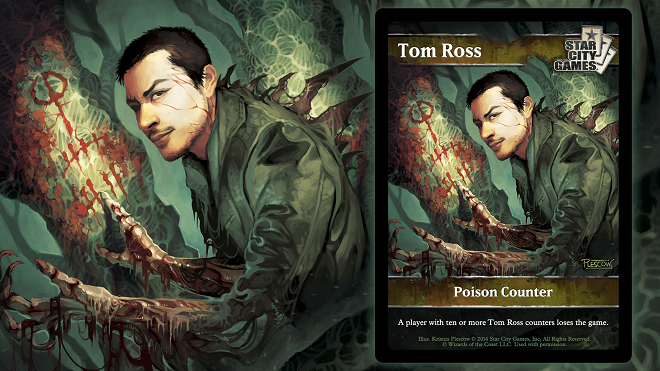
The most exciting thing about the deck has to be the four Become Immense. Four. FOUR! I guess Treasure Cruise wasn’t the only delve card worthy of
getting fully played. At six mana, with nine fetchlands and a full set of Gitaxian Probe, it seems fairly reasonable to be able to cast this early for very
little mana. While I am also slightly surprised by zero copies of Rancor, I have no doubt that Tom Ross and The Pantheon knew what they were doing by
eschewing it.
7th Place:
Creatures (12)
Planeswalkers (4)
Lands (25)
Spells (19)

Straightforward. To the point. One of my favorite things about this build piloted by Jesse Hampton is that it doesn’t muck about with the cards that
matter. Everyone has Siege Rhino and Tarmogoyf, but this list has the following: 4 Lingering Souls, 4 Liliana of the Veil, 2 Tasigur, a Maelstrom Pulse,
and three “one-drop” removal spells in Path to Exile and Dismember. In addition, the sideboard Aven Mindcensor and Feed the Clan are less common choices
that I imagine were incredibly important even before he made the Top 8.
6th Place:
Creatures (12)
Planeswalkers (6)
Lands (25)
Spells (17)

This is probably my favorite deck in the Modern-Only Top 8. We haven’t really heard from Jund in a while, but it definitely has a lot of things going for
it. Terminate is a stone-cold killer, and Chandra, Pyromaster is a great way to take over any game that starts lasting any length of time. Importantly
though, I think that one card in the sideboard is worthy of a special mention:
As we were prepping for this Pro Tour, the Madison contingent of Team Work had come to the conclusion that Lingering Souls was incredibly important.
Thundermaw Hellkite seems perfectly positioned in a world where that is the case.
5th Place:
Creatures (14)
Lands (20)
Spells (26)
- 4 Lightning Bolt
- 4 Lava Spike
- 3 Lightning Helix
- 4 Rift Bolt
- 2 Shard Volley
- 3 Searing Blaze
- 2 Skullcrack
- 4 Boros Charm
Sideboard

Ah, Burn. Much like Ari Lax and the TCGPlayer folks, Lee Shi Tian determined that other Burn decks were worth paying attention to. Lightning
Helix, not normally a card that makes the cut in Burn (the damage rate is too low), makes an appearance here, as well as Kor Firewalker. The minor splash
of green for Destructive Revelry sits alongside Smash to Smithereens; I’m guessing that just like Ari, they were not interested in being dead to tricksy
plays from an opponent.
4th Place:
Creatures (27)
- 4 Birds of Paradise
- 3 Kitchen Finks
- 3 Wilt-Leaf Liege
- 4 Noble Hierarch
- 2 Qasali Pridemage
- 3 Loxodon Smiter
- 4 Voice of Resurgence
- 4 Siege Rhino
Lands (23)
Spells (10)

I wouldn’t be surprised to find out that Wilson’s list had been lovingly crafted by Mr. Brian Kibler. While they both certainly played the same list, the
Loxodon Smiter/Wilt-Leaf Liege package of cards (in addition to the massive acceleration of eight one-mana accelerators) is pure Dragonmaster. If ever
there were a more anti-Liliana of the Veil deck in Modern, this is it: neither side of the Lili activation looks at all favorable against this deck.
Official coverage is calling this “Abzan,” but this is one of those decks so different from what we commonly think of as Abzan, it showcases the
limitations of the new naming conventions.
3rd Place
Creatures (14)
Lands (20)
Spells (26)

Here we have the only true second copy of a deck in our Modern Only Top 8. Yam Wing Chun and Park Jong-sun are a part of the Team MTGMint crew that took
this event by storm. While there are other “duplicate” decks in our Top 8, these teammates are actually playing the same specific version. Take note, Burn
afficionados: this is probably the version of the deck you should be picking up.
2nd Place:
Creatures (14)
Lands (20)
Spells (26)

Showing that there is more than one way to build Infect, Tyler Hill’s list runs Rancor, can tutor up an Inkmoth Nexus or Pendelhaven with Sylvan Scrying,
and doesn’t run the full set of Become Immense. It does run the full four Wild Defiance in the maindeck, certainly a likely powerhouse against the
room full of Burn.
1st Place:
Creatures (26)
- 4 Arcbound Ravager
- 4 Ornithopter
- 1 Master of Etherium
- 3 Steel Overseer
- 3 Memnite
- 3 Etched Champion
- 4 Signal Pest
- 4 Vault Skirge
Lands (16)
Spells (18)

Finally, we have Affinity. Roberto Esposito piloted the only copy of the Robot menace in the top portion of the field, and his build includes some
thoughtful sideboard hate that makes me smile. Blood Moon, Thoughtseize, and Spell Pierce are fairly common card choices for this deck. What is amazing to
me though, are these two cards:
These two cards represent clear choices made by Roberto that shows he had a very specific idea of what it was he wanted to target. Lingering Souls is one
of the best cards against Affinity, and Illness in the Ranks is devastating for an Abzan player’s defenses. Stain the Mind acts like a third Thoughtseize,
but with the added bonus of just dismantling an opponent’s plan for the entire game. Kudos, Roberto.
All the Archetypes
All told, there were six archetypes that were played by at least 5% of the field, Abzan, Burn, Affinity, Infect, Twin, and Zoo. Of these, the big surprise
to me is Infect. In retrospect, given Tom Ross being brought into The Pantheon, I should have expected a large contingent of talented players to give the
deck a spin. Other than that, I think the metagame was represented about as expected, with Living End being the most represented “rare archetype,” at just
over 1% of the field – call it the “tallest dwarf in the room” prize. Fully 45 players played an archetype with less than 1% representation.
For quite some time now, making Day Two of a Pro Tour has been a much easier prospect than it used to be. Just under two-thirds of competitors make the
cut; this time, that was 258 players out of the total 407. In order to get a better sense of how an archetype breaks down, I also look at how many people
made the rough “Top 64” of the event (a clean 64 players, in this case) and how many make a rough “Top 32” (23 players).
Here is the visual representation of the metagame for Pro Tour Fate Reforged:
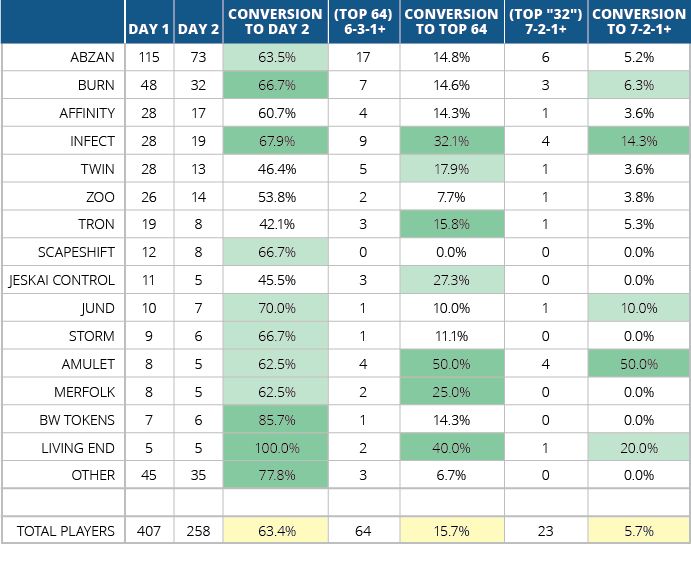
In yellow, you can see the performance of the room as a whole. The data points which are highlighted in green are those decks which outperformed the
expected finish of every player in the tournament, with light green for those where there can be less confidence in this metric: either a single competitor
outperforming with their archetype, an archetype slightly outperforming the average, or a Day Two conversion that would go above or below the line with the
change of one competitor’s result. If an archetype is doing worse than the yellow percentage, a typical player playing that deck would do better
to swap decks with a random competitor in the room.
The first thing that I notice is that the performance of some of the top represented archetypes in achieving Day Two was fairly low. Unlike in some
previous events, where top represented archetypes have a least a fair showing on this metric, the majority of these top archetypes (four of seven)
underperformed a random deck in the room!
Only two archetypes among the most popular were markedly better performers than the average: Burn and Infect. In part, I think that this is because both
decks are a solid choice, however, I also think that it was very meaningful that Team MTG Mint Card and Team TCGPlayer were both playing Burn and that The
Pantheon was on Infect. Whenever you have such a large collection of talent playing a deck, it will certainly affect the results.
The 45 players playing the most unusual archetypes (less than 1% of the field playing the same archetype) actually did better than all of the most popular
archetypes. I’m sure that this represents people playing their pet decks, decks that they have been working on and homing for some time, and they were
rewarded by being able to cross the fairly low bar into Day Two.
Living End and W/B Tokens made a huge splash into Day Two. Every single Living End player made the second day and all but one W/B Tokens player did the
same. While there were not many of either archetype played, they both excelled incredibly well.
The biggest failures in trying to achieve Day Two were Splinter Twin, Zoo, Tron, and Jeskai Control. Collectively, I imagine these decks suffered against
Abzan and Burn. In addition, all of these decks were enough on people’s radars to suffer from specific targeted hate cards like Torpor Orb, Blood Moon, or
specifically antagonistic card choices like Lingering Souls and Siege Rhino.
The real meat in the data though, lays in the top portion of the field.
Amulet Bloom seems like it may have been the clear best deck choice. Five players made Day Two, and four of those five finished in the Top 32. With only
eight players playing Amulet Bloom, this is quite remarkable, especially considering how much better this is than the performance of other decks. If only half those numbers had achieved as well, it would still be the best performing deck in the room at the top end of the scale, and it would
still have only three other archetypes outperforming it. That is remarkable. Spikes out there: before the hate begins in earnest, start playing this deck now.
Infect is the next clear winner. It was twice as successful as an average deck in the room. Even considering the amount of talent in The Pantheon, this is
a remarkable achievement. While not everyone running the deck was running the same build, it stands to reason that the archetype is a very powerful one,
especially given that the most popular deck, Abzan, was also typically a Lingering Souls deck. Lingering Souls is an excellent card against Infect, and
Infect was still able to perform at an incredible level.
Given the huge numbers at play with Abzan and Burn, this will generally have a sort of ‘watering down’ effect on results. They performed fairly
unremarkably, at or near the median of the event. In some ways, I think a lot of this has to do with the subtleties of having a good build and playing it
properly. Abzan has an incredible depth of selection in its card pool, and the path a player chooses can make a huge difference in their overall result.
Burn, on the other hand, has many fewer cards to choose from but is notoriously unforgiving. The result of a common Burn match often involves the phrase
“just barely.” Incredibly skilled pilots can get great results from Burn, but it doesn’t take much to turn a “W” into an “L”.
Jund, interestingly, wildly outperformed Abzan in making Day Two, but its performance on Day Two could only be tied to Park Jong-sun. Jong-sun was
the only successful Day Two player with the deck, so it is possible that Jong-sun had a lucky day; conversely, it could be that other players’ versions of
the deck were simply not as ready for the field.
Affinity, Splinter Twin, Zoo, and Tron all did, for the most part, quite poorly, even after a poor showing to make Day Two. Affinity and Zoo both have the
dubious distinctions at underperforming a random deck at all levels of the event. Both Splinter Twin and Tron managed a reasonable result overall,
but had very few standout performances, with only Antonio Del Moral Leon achieving an exemplary record with Splinter Twin, and Thierry Ramboa managing the
same achievement with Tron. Both of these decks had a significant number of players playing them, so this actually speaks fairly poorly for the archetype.
I’m not surprised about Twin’s struggles in an Abzan-heavy field, but I am actually surprised about what held down Tron. I wonder if it could be
the success of Infect and Amulet Bloom, knocking around unlucky Tron players trying to make it to the top tables.
Scapeshift absolutely fell to pieces on Day Two, with 6-4 being the best result for the deck. Storm had similarly dismal results, getting a single player
to that mark.
Jeskai Control had a very interesting ride. Most players playing it did not make Day Two, those who did tended towards the top end of the result, but none
of them made the very top portion of the field. I expect that this is because only the best players were able to pilot it to top performance, and a top
performance for the deck was only “solid.” Lingering Souls is a very difficult card to beat with the deck unless you have actively decided that is a goal
you want to achieve.
Overall, there are a few simple conclusions I’ve made.
There are only two decks you can call “great”:
Amulet Bloom
Infect
There are a couple of decks that are solid:
Abzan
Burn
There are many lackluster decks:
Zoo
Tron
Jeskai Control
Storm
There are a few decks that might have potential, but they need exploration to see if they can have a winning formula:
Affinity
Jund
Merfolk
W/B Tokens
These days there are less opportunities to play Modern. Knowing what the lay of the land is in a format that is so large can be a very difficult task.
Modern has always been the format that I’ve struggled the most in, and when I’ve succeeded, I’ve nearly always done so on the back of Liliana of the Veil
and friends (in the form of pure B/G Obliterator Rock, like I played in GP Omaha). The prospect of piloting Amulet Bloom actually exhausts me, but I’ve
loved Infect ever since Ari Lax showcased a Sultai version many years ago.
I expect I’ll spend my time in Modern continuing to polish and re-polish Obliterator Rock but also try some work with Merfolk, W/B Tokens, and some more
rogue decks. Given more time before the Pro Tour, if I’d had my way, I would have wanted to get more testing in with Merfolk, because I feel like it looks
promising. Had I been there, I wouldn’t have been surprised if I’d ended up playing it at Pro Tour.
Also I’d like to add one exciting personal note. For this event, I played a supporting role for Team Work, the interim name for the team that combined
Madisonians like Sam Black and newly minted PT Top 8 competitor Justin Cohen with mainstays such as Paul Rietzl, Matt Sperling, and Ben Stark. While you
can read Justin’s account of his second place finish
or Sam’s account of some of the
prep, one of the things I was pleased with was how we did as a team. If we do it again, I already know that there are some great improvements we
can make, but I viewed the event as a success.
Fellow unqualified teammate Brian Kowal ground down the numbers about how we did compared to other teams. Here are the top few performing teams (and a few
other numbers in italics that I added in):
Average Match Points Per Player
Median Top 8 Player
– 37
Team MTG Mint Card – 34.3
Team Work – 25.3
The Pantheon – 25.2
TCGPlayer – 24.14
Channel Fireball/Face to Face – 22.7
Median PT Player
– 21
While Team MTG Mint Card slaughtered it, I think this was an excellent showing for us as a first-time team. I know, I for one, am excited for the next Pro Tour, and if the team stays together, I hope we can greatly improve on our results (and maybe even top those Mint Card masters).
I intend to try.

